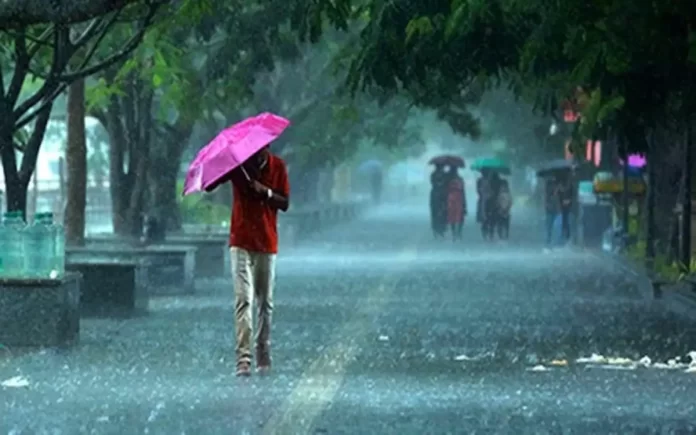New Delhi: Following a warm 2023, meteorologists predict that El Niño conditions are set to dissipate by June this year, raising hopes of abundant monsoon rains in the upcoming season.
At least two global climate agencies announced last week that El Niño, the warming of the equatorial Pacific Ocean impacting weather worldwide, has begun to weaken, with a probability of La Niña conditions emerging by August.
Indian weather scientists, closely monitoring these developments, suggest that the onset of La Niña conditions between June and August could lead to improved monsoon rains compared to last year. However, they caution that the ‘spring predictability barrier,’ which poses challenges for accurate forecasting, remains a factor.
Madhavan Rajeevan, former secretary in the Ministry of Earth Sciences, stated, “There is a good probability of La Niña developing by June-July. Even if El Niño transitions into ENSO-neutral conditions, the monsoon this year should be better than last year.”
The southwest monsoon delivers approximately 70 per cent of India’s annual rainfall, crucial for the agriculture sector, which contributes about 14 per cent to the GDP and employs over half of the nation’s 1.4 billion population.
The United States’ National Oceanic and Atmospheric Administration (NOAA) reported last week a 79 per cent chance of El Niño transitioning to ENSO-neutral by April-June and a 55 per cent likelihood of La Niña developing by June-August.
The European Union’s Copernicus Climate Change Service (C3S) confirmed the weakening of El Niño, with La Niña being its cyclic counterpart.
“Currently, we cannot say anything with certainty. Some models indicate La Niña, while some predict ENSO-neutral conditions. However, all models suggest an end to El Niño,” said D Sivananda Pai, a senior scientist at the India Meteorological Department.
NOAA noted a historical tendency for La Niña to follow strong El Niño events.
“The forecast team agrees with the latest model guidance, with some uncertainty regarding the timing of transitions to ENSO-neutral and La Niña,” stated the US agency.
“Even if El Niño transitions into ENSO-neutral conditions, the monsoon this year should be better than last year,” reiterated the senior meteorologist.
India received “below-average” cumulative rainfall of 820 mm in the 2023 monsoon season, compared to the long-period average of 868.6 mm, attributed to a strengthening El Niño.
Pai explained, “Assuming El Niño continues through the first half of 2024, the World Meteorological Organisation (WMO) earlier predicted that 2024 would be warmer than 2023. If La Niña develops, 2024 would not be warmer than 2023.”
Roxy Mathew Koll, a climate scientist at the Indian Institute of Tropical Meteorology, highlighted that the latest forecasts indicate a swift transition to La Niña by June, potentially resulting in a timely and plentiful monsoon.
“At the same time, if high temperatures persist, we could expect intense cyclones and extreme rainfall,” he added.
Koll cautioned that global temperature anomalies might persist despite the transition.
“We might anticipate a symmetrical effect from La Niña, but it lacks the intensity of El Niño. So, the cooling-compensation effect we might expect will be subdued. In fact, we’ve experienced warmer years during La Niña in recent times, warmer than El Niño years in the past,” explained the scientist.



